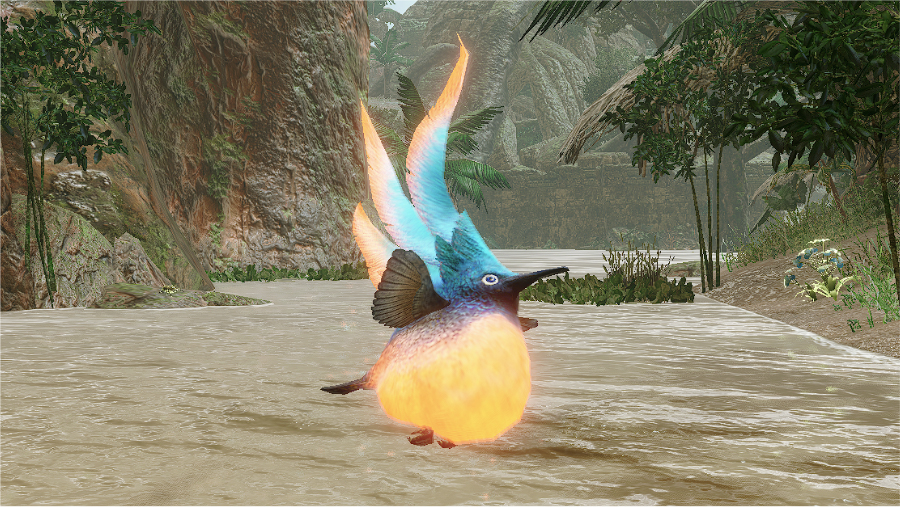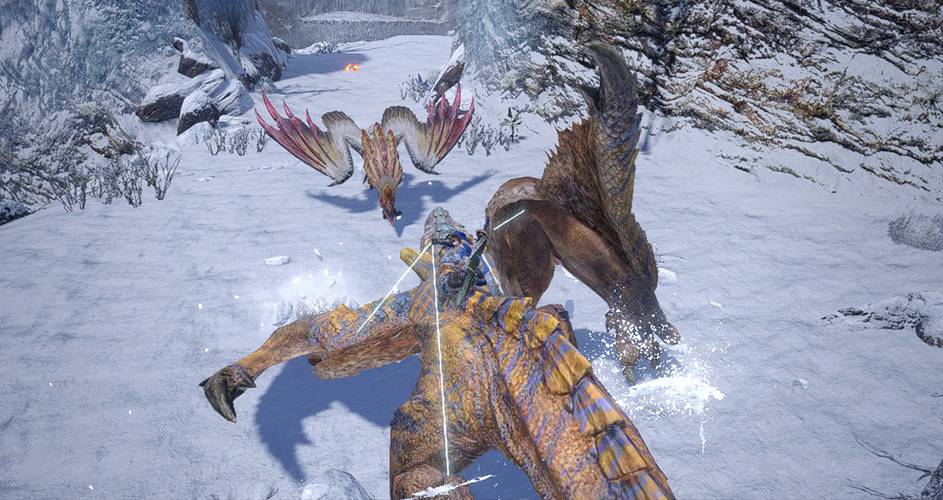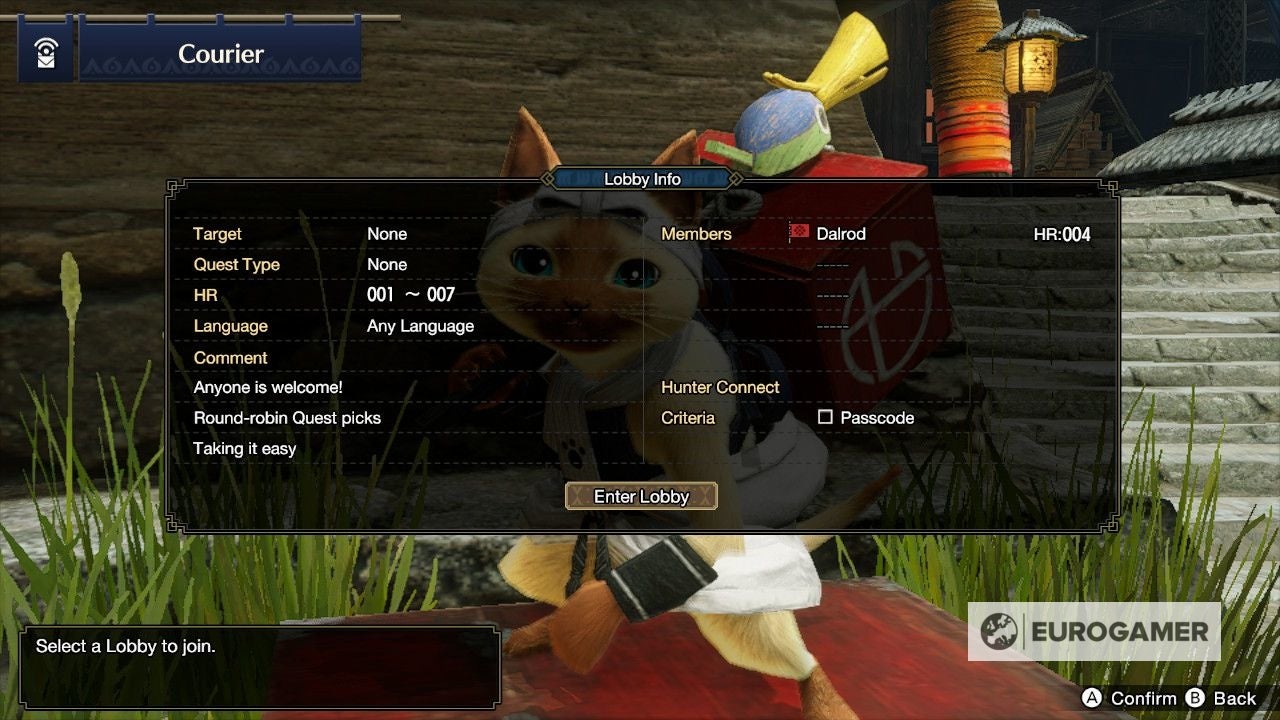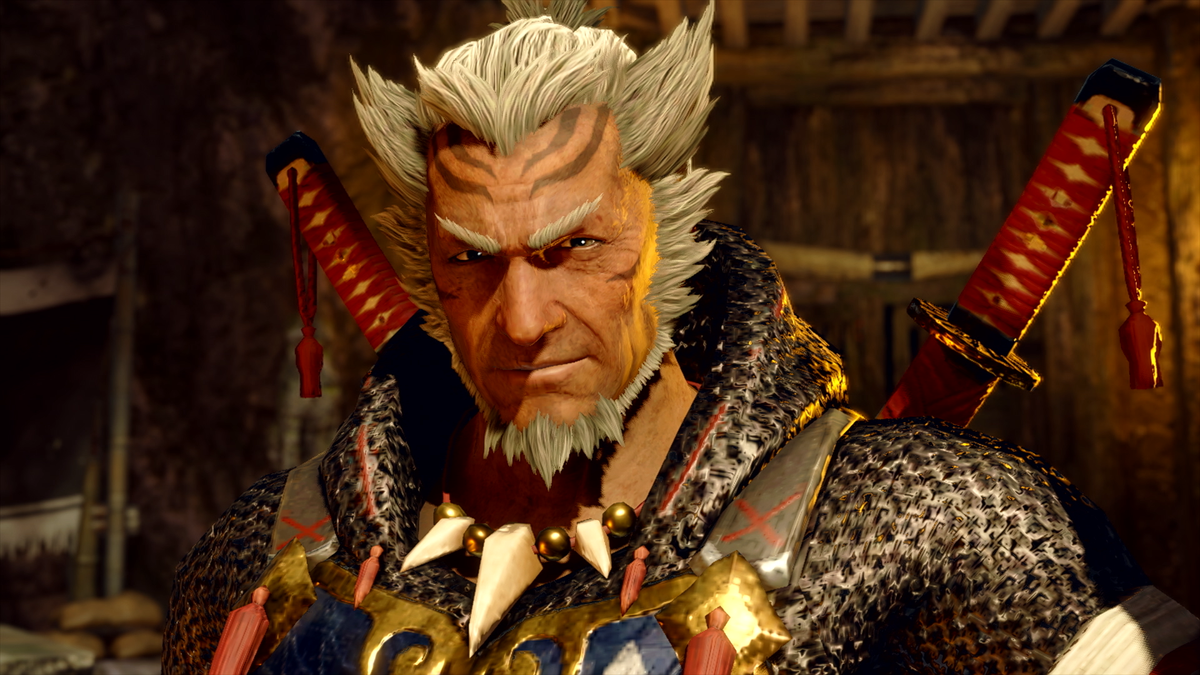Monster Hunter is a long-running series from Capcom that quenches the thirst to go up against incredibly huge and ferocious monsters and bring them down against all odds. The distinct weapon design and gameplay have always kept this series fresh and no other franchise has been able to replicate this magic.
Monster Hunter had a cult-like dedicated following since its inception but it was Monster Hunter World that opened this franchise to a larger audience owing to its release on major consoles. Now with Monster Hunter Rise, which recently launched, Capcom tried to capture both the modern and classical ways of how Monster Hunter worked and it has resulted in a debate amongst the audience of which one is better Monster Hunter World or Monster Hunter Rise.
The new ways which differentiates Monster Hunter Rise to that of Monster Hunter World are:
- Verticality
- Endemic Life
- Survival Mechanics
- Traversal
- Gyro Support
- Wyvern Riding
- Skippable Cutscenes
- Lobbies
- Rampage
- Hub Co-op
- Engine
- Faster Upgrades
- Wire Bugs
- More Accessible
- Palamute
Related: Is Monster Hunter World worth it in 2019?
Verticality

Verticality is a major focus in Monster Hunter Rise. A lot of that is obviously down to the new traversal mechanics courtesy of the Wire Bugs which lets you scale tall structures or mountains with much ease but other new mechanics emphasize verticality as well. Most surfaces in the world will be climbable for instance though you will have to keep an eye on your stamina while climbing which will deplete pretty quickly. Palamutes can also climb up surfaces further encouraging vertical traversal.
Endemic Life

Endemic life forms from Monster Hunter World have returned to Rise but this time they are much more than just collectibles and have actual tangible impacts on gameplay as well.
In Monster Hunter World there were several small life forms moving around the various biomes and aside from giving the world a more living breathing feel they didn’t really offer much to the player but now all these small creatures offer specific buffs to the player like temporary damage boosts, extra defense or items. They can even be picked up while riding on your Palamute which can make the long journeys to and from monsters a bit more interesting.
Some can be used as consumables in combat, some can be used to make it easier to mount monsters, some can provide crucial stat buffs, while some can even inflict the new monster Elemental Blight status ailment.
Related: How To Capture Monsters In Monster Hunter: World
Survival Mechanics

Survival mechanics are removed in Monster Hunter Rise. This is one change that has proven a bit controversial with Monster Hunter fans. Every game in the series has featured some sort of light survival mechanics requiring players to drink specific potions in locations with certain climates in order to prevent hits to health and stamina and though this isn’t necessarily a major mechanic it is something that’s been around for a while until recently, that is Monster Hunter Rise is removing those survival mechanics and while there are many who would argue that this was just busy work anyway others still will tell you that it might contribute towards making things too simplistic.
Traversal

Combat isn’t the only area of gameplay that has changed significantly. Thanks to Wire Bugs, traversal is also seeing major changes with a Wire Bug equipped to each arm players will be able to tether bugs practically anywhere and swing from them on yarns of silk essentially being able to swing all across the maps like Spider-man. Additionally Monster Hunter rise also allows you to hop on your Palamute’s back and ride it across areas which ends up making traversal a lot quicker and much more kinetic.
Related: How to Unlock Charms in Monster Hunter: World
Gyro Support

Since Monster Hunter Rise was a Nintendo Switch exclusive gyro support is a must. Included in most Switch games even those that don’t necessarily need gyroscopic controls but thankfully Monster Hunter is a series that definitely benefited from gyro support. Ranged combat has often been a bit finicky in Monster Hunter so being able to use gyro controls for weapons like Bow Guns makes things a lot more responsive and intuitive. Of course, this is an optional feature so if you want to stick with buttons exclusively you will be able to do that as well.
Wyvern Riding

Wyvern riding is one of the most interesting new abilities being thrown into the mix. In Monster Hunter Rise once you have hit a Wyvern with enough silk bind attacks using your Wire Bugs, which is not a cakewalk since those attacks do have cooldowns, you will be able to jump on the monster’s back and use the silk yarns as puppet strings following that you can control the Wyverns to move dodge and even attack other monsters.
Related: How to Unlock Layered Weapons in Monster Hunter: World
Skippable Cutscenes

Monster Hunter hasn’t really ever been a story-centric series even though Monster Hunter World put more focus on storytelling than its predecessors which isn’t really saying much as the story was still very much an afterthought at most which was why it was so annoying to have to sit through unskippable cutscenes. From taking you out of the action to presenting hurdles in multiplayer it could be a real nuisance thankfully cutscenes in Monster Hunter Rise are skippable so if you don’t care about the story and just want to ignore it and get right back into some monster slaying fun you do have the option to do so.
Lobbies

Co-op multiplayer is a core part of the Monster Hunter experience but Rise has made some changes from how things were handled in World essentially to make them more streamlined. While multiplayer lobbies in Monster Hunter World could house up to a total of 16 players Monster Hunter Rise is bringing that number back down to four. Things will definitely be less chaotic but for larger monster hunts it does prove to be a challenge. On the whole setting up multiplayer is much more easier in Rise than in World.
Related: Monster Hunter: World Guide to All Elements
Rampage

Here is yet another headlining addition that Capcom made to the Monster Hunter formula. With Rise, Rampages are part of the lore and narrative premise in this game with these catastrophic events occurring every so often and threatening to destroy Kamura Village with hordes of monsters. These are set-piece gameplay moments as well in which you have to take on incoming hordes of multiple monsters where you will be using traps and siege weapons to slow their deadly charge towards the village and then wrapping things up with climactic battles against Apex Monsters.
Hub Co-op

While some might not be happy about the smaller lobby sizes in Monster Hunter Rise the game has also made a few other changes to multiplayer that are definitely going to improve things. In Monster Hunter World, like in previous games in this series, players could only meet up with each other in the hub location’s gathering hub. In Monster Hunter Rise, however, players playing in a group will also be able to explore all of Kamura Village together while still in a multiplayer session.
Related: Monster Hunter: World What to Do After Beating the Story
Engine

The Monster Hunter series has been using Capcom’s MT Framework engine for a long time now and even though 2017 saw the beginning of Capcom’s widespread shift to the new RE Engine, 2018’s Monster Hunter World nonetheless stuck with MT Framework. With Monster Hunter Rise though the series has finally made that switch, built on a modified version of the RE Engine specifically retooled for developments on the Switch. Monster Hunter Rise marks yet another major Capcom franchise to shift to the RE Engine.
Faster Upgrades
/cdn.vox-cdn.com/uploads/chorus_asset/file/22392711/2021032316015500_s.jpg)
Grinding and farming parts and components from monsters to craft and upgrade gear is a crucial part of Monster Hunter’s core gameplay loop and while that obviously did not change with Rise it has been tweaked essentially. The entire process is much quicker with weapons requiring significantly fewer parts to be upgraded and requiring less grinding.
Wire Bugs

The Wire Bug is probably one of the biggest new additions in Monster Hunter Rise one of the many areas its impact is going to be felt is in the combat. Wire Bugs and weapons can be used in conjunction with each other to perform new moves and attacks with each of the 14 weapon types interacting with the wire bug differently. The major differences between each weapon type have always been one of Monster Hunter’s biggest strengths so to see that is amplified even further is very exciting.
Related: Monster Hunter: World What to Do After Beating the Story
In Monster Hunter World environments occasionally had some areas where you could swing across gaps using glowing beetles called Wedge Beetles. Rise expands on this concept with the Wire Bug that can be used to swing across any gap that the player wants and can even be chained together with wall runs to reach even higher locations. There are still areas where more scripted Wire Bugs can be used to reach really high ledges but more often than not the game requires players to choose their own routes to objectives and experiment with different Wire Bug maneuvers.
The Wire Bug also serves a critical role in the combat as it can be used to thrust players into the air for a downward strike and more importantly can be used to quickly recover from being knocked down avoiding any devastating follow-up attacks that would have otherwise killed the player.
More Accessible

Capcom has been vying for better accessibility in Monster Hunter games for as long as Monster Hunter has been around. This is a notoriously dense series and miraculously enough Capcom managed to streamline it to a great extent with Monster Hunter World making it very accessible while still retaining its identity and most of its complexities. The developers have aimed to make Rise even more accessible through things such as improved traversal, the removal of survival mechanics, requiring less grinding, and more are there to achieve this effect all the while adding an extra layer of fast-paced easy action.
Palamute
:no_upscale()/cdn.vox-cdn.com/uploads/chorus_asset/file/21939977/MHRise_Palamute_Shake_hand.jpg)
Palikos your feline buddies have always been synonymous with Monster Hunter and while they are of course returning in Rise the developers have also added something completely new. The Palamutes are canine companions who accompany you on your hunts and are capable of a lot more than just aiding you in combat and can even latch on to monsters in some instances. These new furry friends are also rideable making your trek to the far reaches of the map even easier. Just like the Paliko cats, the Palamutes act as an extra AI-controlled ally and will often distract monsters giving players just enough time to heal or sharpen their blade mid-fight and because palikos also follow the player, playing Monster Hunter Rise in single-player mode has never been easier. And look at them they are so cute!
Monster Hunter Rise, though remains true to the franchise, has introduced quite a lot of new features to keep things fresh and while these changes might not gel with you they are definitely game-changing in some instances. Looking at the differences it is down to the player’s preference whether they accept these for the better or remain true to the old ways of Monster Hunter World. Monster Hunter World had a more open world that felt rather alive with the various monsters and creatures even interacting with each other while Rise has taken the traditional Monster Hunter route where the world is divided into zones which are glorified arenas for you to locate monsters and engage in fight them.

